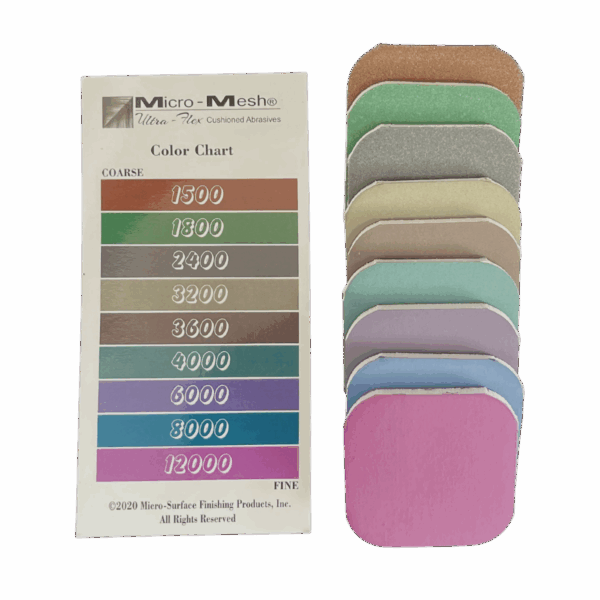Micro-Gloss (blue label) is a general all-purpose water-based liquid abrasive which uses a one-micron Aluminium oxide abrasive crystal to achieve a fine finish on acrylics, plastics, polycarbonate, fiberglass, wood, silver, gold, copper, brass, paint urethanes, lacquers, and polyesters to name a few. This unique liquid removes hairline scratches, haziness, and halos untouched by other products. Contains no filler or wax that could cause yellowing. Remove scratches and imperfections with Micro-Gloss and buff back to optical clarity. Micro-Gloss will remove a 4000 Micro-Mesh or 1500 CAMI scratch pattern. Use by hand or machine with a lamb’s wool polishing pad or foam sponge pad. Use the Micro Gloss #5 formulation when a more aggressive cutting action is required. You will need to follow the #5 Micro Gloss with the regular Micro-Gloss.
INSTRUCTIONS FOR USING MICRO-GLOSS
1. Flush the surface to be polished with water and wipe with a damp soft 100% cotton flannel cloth. Make sure all crevices are flushed free of dirt.
2. Slightly dampen a piece of flannel, apply a small drop of MICRO-GLOSS to the cloth and rub briskly over area. Work in a straight-line pattern, applying firm pressure for 2 to 3 minutes or until MICRO-GLOSS has almost disappeared. Avoid using circular motions.
3. Continue in sections, overlapping slightly.
4. Wipe entire surface with dry flannel cloth to remove any MICRO-GLOSS residue.
Note:
A. Use only 100% cotton flannel with MICRO-GLOSS. Cotton Flannel pieces may be washed and re-used many times. Keep flannel material clean and dry when not in use. Do not use flannel cloth contaminated with dried MICRO-GLOSS or other compounds.
B. A lambswool polishing pad with a random orbital buffing machine may be used in place of the hand rubbing in Step 2. The buffer should be used with light pressure and should be kept moving across the surface using a straight-line pattern. Avoid moving the buffer in a circular motion. When using MICRO-GLOSS on Polycarbonate and acrylic, the buffer must be held flat against the surface and kept moving to avoid “dishing” the surface, causing distortion.


















